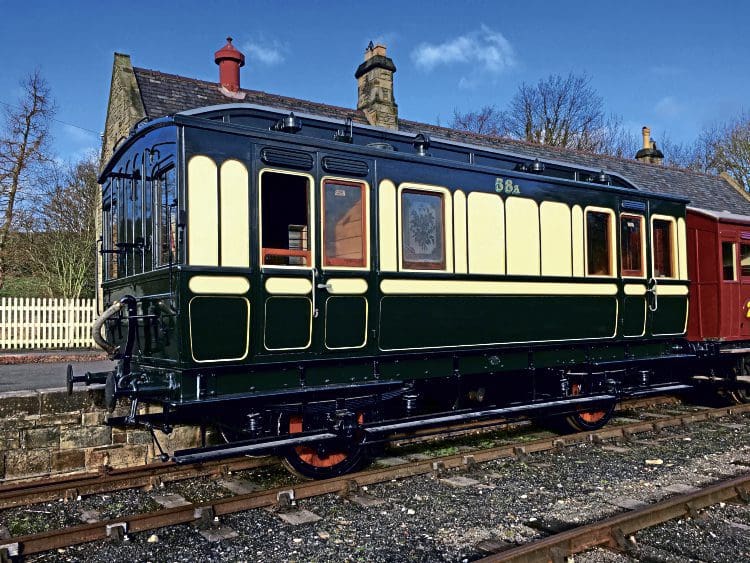HIGHLAND Railway-built carriage No. 58A – which ran behind privately-owned 0-4-4T Dunrobin has been returned to service at Beamish –the North of England Open Air Museum.
Built by Sharp Stewart in 1895 to a design similar to the Highland Railway W class for the 3rd Duke of Sutherland, Dunrobin was used until around 1920 to haul his private train between Dunrobin Castle and Inverness. The duke had acquired running rights on the Highland Railway as a condition of financing construction of part of the line, on which he had a private station.

Two carriages were constructed, which Dunrobin hauled to Inverness and were then attached to Highland Railway trains to convey the duke to his destination. The carriages were a bogie saloon and a four-wheel saloon, No. 58A, which was delivered in 1909 after being built by the Highland Railway at Lochgorm Works in Inverness.
Enjoy more Heritage Railway reading in the four-weekly magazine.
Click here to subscribe & save.
No. 58A was described as a brake-saloon and included a single passenger saloon, water closet and brake compartment. End windows were also fitted and the interior was relatively plain in comparison to No. 57A, the larger coach. This feature suggests that the saloon was largely used for the conveyance of luggage and the guest’s entourage, with the dignitary riding in style (and warmth!) aboard Dunrobin.
Operationally, it appeared that No. 57A was largely kept to running south of Inverness, with transfer to the smaller carriage and locomotive taking place for the final leg of the journey. A carriage shed was built at Dunrobin station and the locomotive kept at Golspie to the north.
When the duke required his train, the castle at Dunrobin would inform the railway and the regular driver until 1917, Alex Rhind, a member of the castle staff, would prepare the locomotive and collect the coach from Dunrobin station.
Read more in Issue 239 of HR – on sale now!
Advert
 Enjoy more Heritage Railway reading in the four-weekly magazine. Click here to subscribe.
Enjoy more Heritage Railway reading in the four-weekly magazine. Click here to subscribe.




